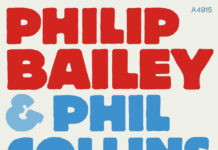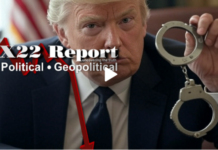By Kate Martin, Staff writer, Tacoma News-Tribune March 22, 2015

New contracts that took effect Jan. 1 show the broadcasters’ fees are rising far faster than inflation.
No fee has increased over the years more than that of Seattle broadcaster KOMO. In 2009, the broadcaster received only 31 cents per month per home from Click. That amount has soared this year to $2.43 — a 684 percent increase.
Had the broadcaster’s fee risen equal to inflation, KOMO would earn only 34 cents per subscriber – or approximately $78,000 for all of 2015.
Instead, the new fee structure will mean Click pays about $561,000 this year. That cost is likely to be passed down to the utility’s 19,250 subscribers.
Chris Gleason, spokeswoman for Tacoma Public Utilities which operates Click, said Friday the utility board will consider a 17.5 percent rate increase for Click subscribers for 2015 and an undetermined increase for 2016 during a Wednesday meeting.
That contrasts with an earlier plan to have two 10-percent rate increases, one this year and another in 2016.
The TPU board’s first public vote on the new proposal could happen April 8, after which the Tacoma City Council would have the final say.
The “17.5 percent increase is a massive increase for us,” Gleason said. She cited increasing fees to broadcasters as “a huge driver” for the rate increase.
The fees Click pays, and by extension its subscribers, will continue to rise. The three-year contract KOMO’s owners negotiated calls for Click to pay $2.92 per month per subscriber in 2017.
KOMO isn’t alone. Click also signed new, three-year contracts with KING, KIRO, KSTW and Q13 FOX— all stations based in Seattle and whose signals are available for free over the air.
The broadcaster contracts, called retransmission consent agreements, doubled fees overnight for three of the five Seattle broadcasters as Tacomans rang in 2015. Four of the five broadcasters will charge more than $2 per subscriber per month by 2017.
The agreements, long held secret, were released by Click after a two-year court battle that led to the state Court of Appeals ruling for The News Tribune.
The broadcaster fees represent a sharp turnaround from a few decades ago, when broadcasters feared a nascent cable industry that led to the rise pay-TV networks like HBO and Showtime. In the 1980s and 1990s, broadcasters worried their programming — and the advertising they are paid to carry — would be shut out of living rooms across America.
In 1992, Congress adopted a law allowing local broadcasters to choose either to require a cable system to carry its signal or to charge a fee to carry its signal.
For a while, many broadcasters continued to send their signals to cable networks at no charge to get their programming and advertising to more viewers. It wasn’t until 2006 that Seattle network affiliates started charging Click to carry their content.
Industry analyst SNL Kagan predicted in 2013 that broadcasters nationwide would rake in $7.64 billion by 2019 from retransmission fees. But the fees have increased even faster than Kagan predicted, and the company revised its 2019 estimate upward to $8.78 billion, according to Multichannel News.
Still, cable systems pay much more for other programming. ESPN receives more than $6 per viewer per month, according to the Wall Street Journal.
Retransmission fees are a means to help offset broadcasters’ declining advertising revenues. They also allow broadcasters to afford to pay the increasing cost of access to NFL and other sports, local news and other entertainment programming, National Association of Broadcasters spokesman Dennis Wharton told The News Tribune in January.
“They need a healthy revenue stream that sustains that,” Wharton said.
http://www.thenewstribune.com/2015/03/22/3701349_latest-click-cable-contracts-show.html?rh=1#storylink=cpy








We don’t get to see the books of the big privately-owned cable giants. It’s only because Click Cable of Tacoma is publicly owned, that the fees it pays see the light of day.
Canadian TV broadcasters have long yearned to be paid similar fees by the cable firms in this country. When you see the massive dollars involved in the US you can readily see why.
It is a bit of a double-edged sword for many broadcasters…
If we use the 2 Victoria TV stations as an example – Shaw and Telus subscribers on the island would likely demand they receive these channels, so Shaw and/or Telus would negotiate a fee for carriage so as not to lose any customers.
However, if CHEK and CTV2 started to make demands to be carried in the Vancouver market, Shaw & Telus could very well tell the 2 stations to take a hike. It is unlikely that Shaw or Telus subscribers in Vancouver would squawk too loudly if they no longer had access to CHEK and CTV2 from Victoria. The net result would be a vastly smaller market for the Victoria stations, which may or may not be offset by revenue coming from the agreements with the cablecos.
Hang on… but aren’t your examples of CHEK and CIVI deemed as being ‘basic’ by the CRTC anyway… and therefore have to be carried by Shaw and Telus even in the Vancouver market?
And even if CHEK isn’t, then CTV2 has to be carried in Metro Vancouver by virtue of CIVI’s Mt Seymour relay, surely?
If the broadcasters opt to go to a fee-for-carriage set-up, then there would be no mandatory carriage rules — those would be set aside. That is the dilemma faced by broadcasters. They can try and get cash from the distributors (Shaw/Telus) or they can continue to “give away” their signals in exchange for mandatory carriage.
As for Victoria stations, what has not been clearly stated in the CRTC decision is what qualifies as local or regional in terms of the skinny basic bundle the cablecos will have to carry.
On Van Isle – they most certainly would be in the mandatory bundle, but it is less clear whether that would apply to Vancouver as well.
So let’s go back to cable’s origins: an antenna for apartment dwellers and others not able to pick up OTA signals.
In Metro Vancouver, that’d be eight local broadcasters, including CTV2 because of CIVI-DT-2 on Ch 17.1 from Seymour. Then we’d argue over CHEK… plus KOMO, KING, KIRO, KCTS, KCPQ, KSTW, and KVOS.
On the Island, you’d have CHEK and CIVI/CTV2… plus CKVU/City and CHNU/Joy as they have relays, before likewise arguing about SeaTac and Bell’ham stuff.
That would be the present-day OTA line-up of late 60’s pre-satellite, closed-circuit feeds.
Then do KNOWledge and CBCNN and maybe The Weather Network get thrown in?
And cut off anyone away from border areas from American stations on cable.
Wow…. Pandora’s Box.